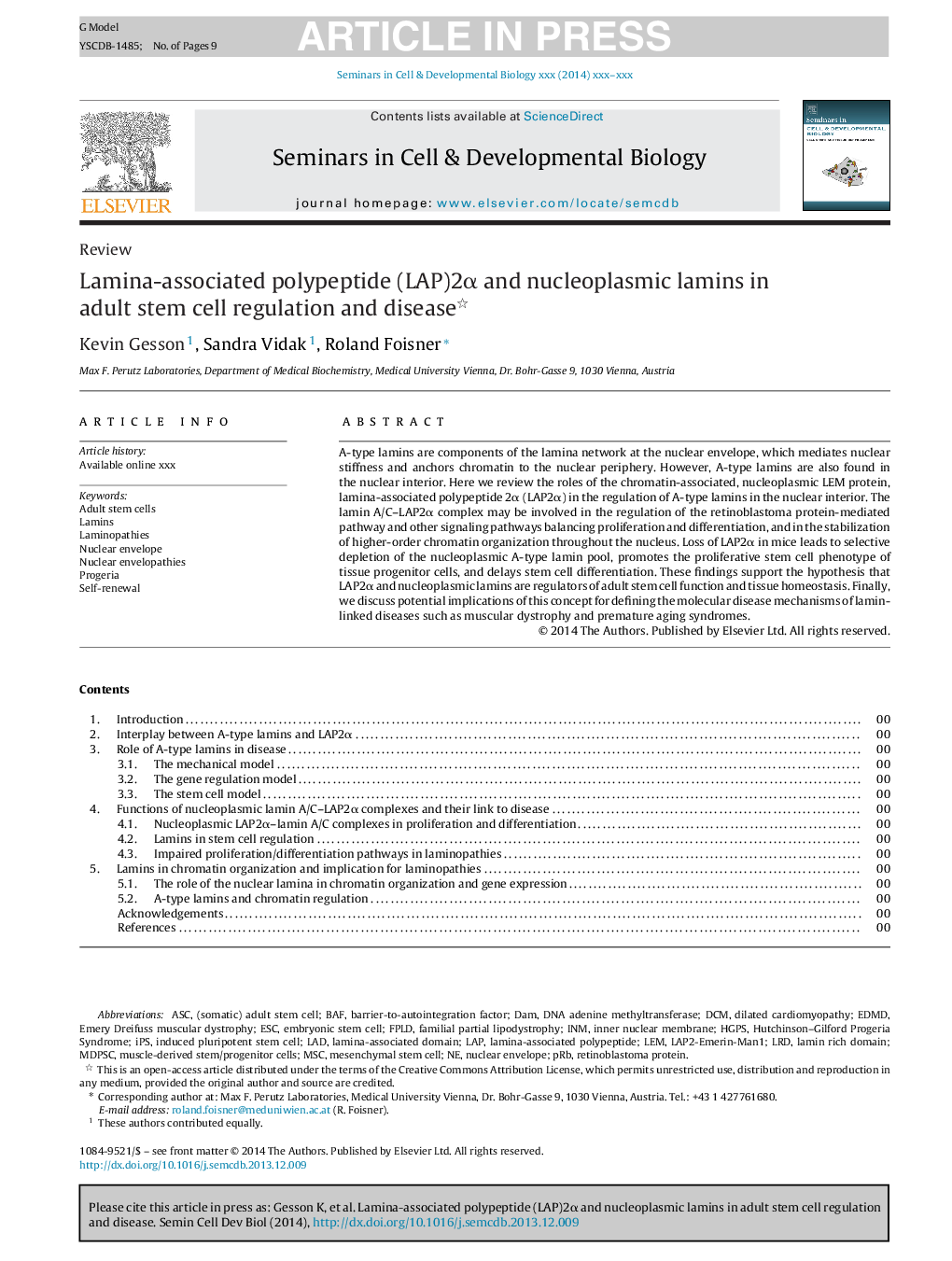| Article ID | Journal | Published Year | Pages | File Type |
|---|---|---|---|---|
| 8480773 | Seminars in Cell & Developmental Biology | 2014 | 9 Pages |
Abstract
A-type lamins are components of the lamina network at the nuclear envelope, which mediates nuclear stiffness and anchors chromatin to the nuclear periphery. However, A-type lamins are also found in the nuclear interior. Here we review the roles of the chromatin-associated, nucleoplasmic LEM protein, lamina-associated polypeptide 2α (LAP2α) in the regulation of A-type lamins in the nuclear interior. The lamin A/C-LAP2α complex may be involved in the regulation of the retinoblastoma protein-mediated pathway and other signaling pathways balancing proliferation and differentiation, and in the stabilization of higher-order chromatin organization throughout the nucleus. Loss of LAP2α in mice leads to selective depletion of the nucleoplasmic A-type lamin pool, promotes the proliferative stem cell phenotype of tissue progenitor cells, and delays stem cell differentiation. These findings support the hypothesis that LAP2α and nucleoplasmic lamins are regulators of adult stem cell function and tissue homeostasis. Finally, we discuss potential implications of this concept for defining the molecular disease mechanisms of lamin-linked diseases such as muscular dystrophy and premature aging syndromes.
Keywords
Lamina-associated polypeptideINMEDMDFPLDHGPSLRDDNA adenine methyltransferaseLAPBAFASCDCMiPSEmery dreifuss muscular dystrophyESCDamEmbryonic stem cellInduced pluripotent stem cellHutchinson–Gilford progeria syndromebarrier-to-autointegration factorInner nuclear membraneLADLemFamilial partial lipodystrophyDilated cardiomyopathy
Related Topics
Life Sciences
Biochemistry, Genetics and Molecular Biology
Cell Biology
Authors
Kevin Gesson, Sandra Vidak, Roland Foisner,
